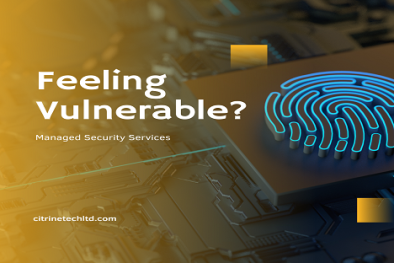Introduction
A managed security services plan is a service that enables you to improve and manage your infrastructure’s security by addressing various aspects of it. It includes the deployment of the right technologies across your company, monitoring, educating, and training employees on best practices, and conducting external audits – all in an effort to increase security while reducing costs.
What do managed security services provide?
Security monitoring: A managed security services provider can monitor your network for threats and vulnerabilities, providing you with real-time alerts and helping to ensure that your systems are secure.
Incident response: Managed security services are often able to respond quickly to a threat or incident on the network by conducting forensics, performing malware analysis, and zeroing in on the cause of the problem. These companies have experience in dealing with all types of data breaches—from employee error through to criminal activity—and can help you discover what happened so that it doesn’t happen again.
Endpoint protection: A managed security services provider will work with you to develop an end-to-end solution that strengthens your endpoint protection capabilities by identifying vulnerable devices before they become compromised by malware or hackers; while they also provide ongoing maintenance coverage as part of their service agreement so that there aren’t any gaps in coverage over time (which could lead attackers into thinking they’ve found an opening).
Vulnerability assessment: This is another service provided by many managed security services providers whose job is not only to detect but also prevent attacks against networks using tools like virtual machines which can simulate attacks against clients remotely without having direct access into them themselves.”
What are the benefits of Managed Security Services?
Managed Security Services are a great way to protect your business. They can help with security policies, incident response, and security training, as well as monitoring and analyzing the results of their work. Managed Security Providers (MSPs) also offer an array of additional services such as:
Security Software Deployment – This is where an MSP deploys new software tools into your environment in order to increase productivity and reduce risk exposure.
Managed Firewall Management – A firewall is used by most companies today in order to prevent unauthorized access into internal networks from external threats such as viruses or malware attacks on websites hosted within them. A firewall uses rulesets applied at port level which allow only certain traffic through based on criteria set forth by those rule sets; this type of protection cannot stop all threats completely but it can significantly reduce their impact if properly configured correctly beforehand!
MSPs can help you with everything from setup to ongoing support. They’ll work with you to identify the right solution for your business and make sure that it’s implemented correctly so that your operations are protected.
Conclusion
As you can see, there are a lot of benefits that come with using managed security services. With them, you’ll be able to protect your company from the dangers of cybercrime while also gaining access to additional resources and expertise that will help you in day-to-day operations.
If you’d like any help or advice on what managed security services can do for your business, or you’d just like to discuss your IT requirements, we’d love to talk. Get in touch.





Comments (2)
Obila Doe
Our infrastructure management approach is holistic, addressing capacity monitoring, data storage, network utilisation, asset lifecycles, software patching, wired and wireless networking and more.
James Weighell
A hosted desktop solution allows for the delivery of a consistent and scalable IT experience for all users in an organisation. With this solution, users gain access via a desktop icon or link.